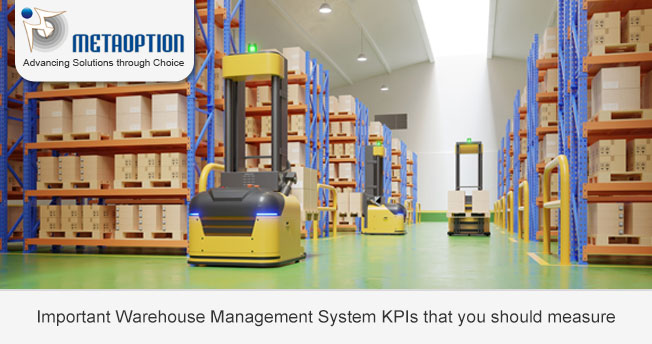You could be shipping orders out to customers quickly and more efficiently. But if you’re not tracking warehouse performance, you’ll never know how exactly your warehouse process affects your business. Warehouse Management System KPIs allow you to set a target for month-on-month performance improvements. Also, it helps to identify areas that will have a direct effect on both overall business costs and customer satisfaction.

Why do we need to measure Warehouse Management System KPIs?
Data is great, but it can be devastating if you don’t know how to utilize it. Knowing what information is essential to help your business improve and grow is important. While thinking about KPIs for your warehouse, it’s all about your items and inventory. Key Performance Indicators consist of inventory accuracy, contraction, inventory carrying cost, turnover, and sales ratio. Keeping an eye on supply chain KPIs relevant to your warehouse operations can help you to understand and improve its efficiency.
Let’s look at some of the important KPIs and know how they can benefit your warehouse operations.
Receiving Efficiency
You can calculate your receiving efficiency by dividing your volume of received goods by the number of working hours for the same timeframe. As your warehouse staff becomes more experienced, your receiving efficiency will increase. If your numbers are on a downward trend, it may be time to re-examine your receiving process.
Put-Away Accuracy
The put-away KPI looks at how accurately your employees put items on the shelf. The goal for this KPI is to have employees put inventory away correctly the first time, all the time. If you aren’t seeing 100% in this KPI, search for patterns in put-away errors suggesting a learned mistake or mixing up similar products.
Shipping KPIs
KPIs in this category can include order cycle time or how long it takes a customer’s order to ship once they place an order. The less you spent the time on this process, the better. If your order cycle times are on the higher end, there may be issues in your picking, packing, or shipping workflows.
Storage KPIs
Storage KPIs are all about how much it costs to keep products on your shelves. Since inventory is capital, these KPIs are necessary to keep an eye on.
Picking KPIs
Many customers ordering items online are searching for a particular product. Receiving the wrong item is not only frustrating for your customers but costs you and your client money. Improving your order picking productivity and accuracy will lower costs and create happy customers. WMS solutions can help you organize and accurately keep track of your inventory by improving your picking and packing processes to help you maintain a perfect inventory. Using a WMS can reduce fulfillment issues caused by human error and provide better insights into available inventory, replenishment and fulfillment needs, and potential inventory issues.
Equipment KPIs
Knowing how professionally your warehouse equipment is used and correcting any issues can save your time and money over the long term. Your equipment utilization rate will show the percentage of material-handling equipment used during the put-away or pick and pack processes.
Return Process KPIs
Product returns are an unfortunate reality of business-to-business or direct-to-consumer sales. Whether someone orders the wrong item, was sent the incorrect item, or the item is damaged or not to their liking, you will have to deal with returned items eventually.
For more information and a tailored demonstration contact us today at MetaOption.


